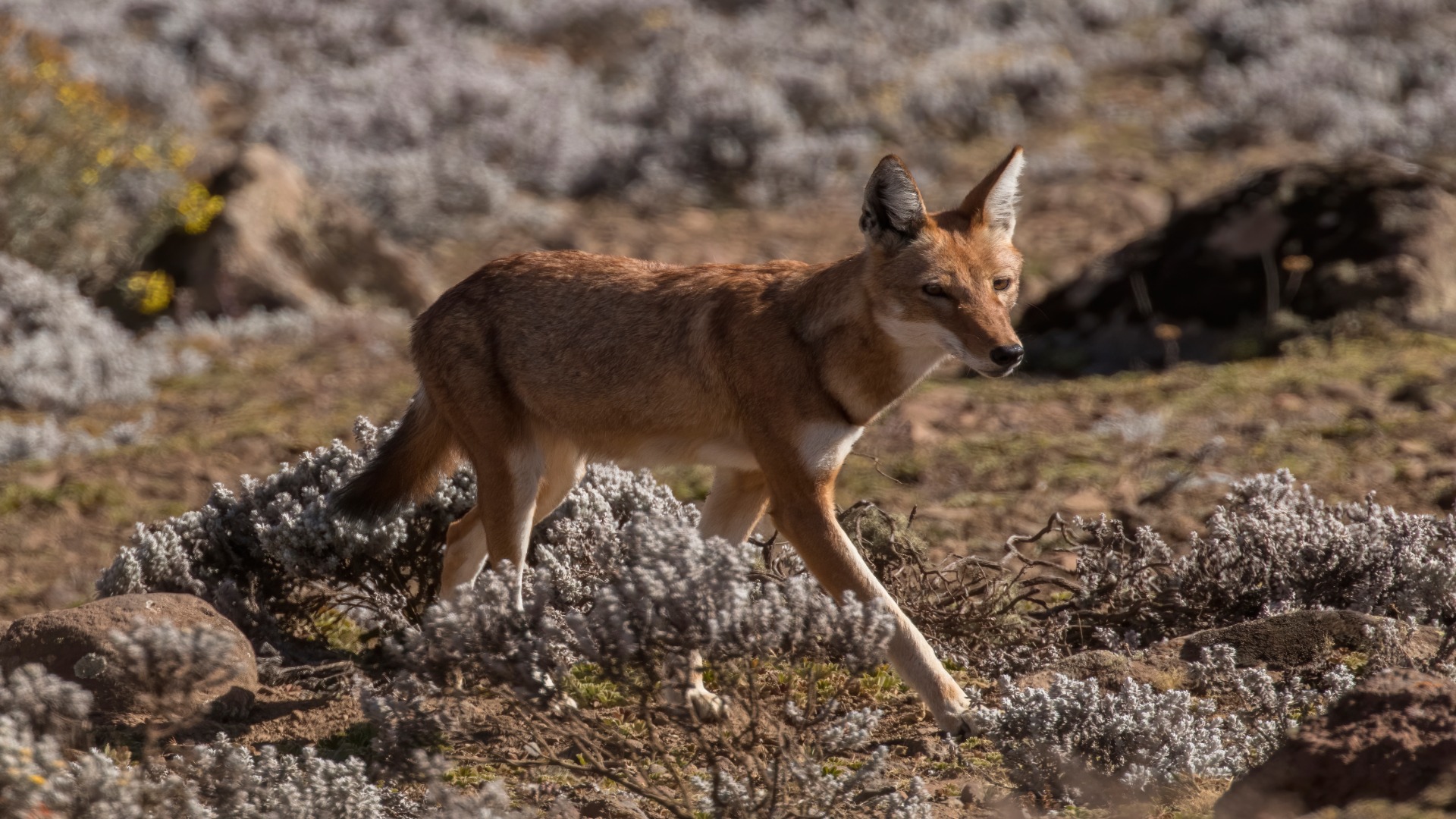Encountering wildlife is part of what makes outdoor adventures thrilling, but coming face-to-face with a wolf can be both awe-inspiring and intimidating. These intelligent predators typically avoid humans, making such encounters rare. However, as wolf populations recover in many regions and humans venture further into wilderness areas, interactions become more possible. Understanding how to respond appropriately can keep both you and these magnificent animals safe.
This article provides comprehensive guidance on wolf behavior, prevention strategies, and response protocols to help outdoor enthusiasts prepare for potential wolf encounters.
Understanding Wolf Behavior and Misconceptions

Wolves are highly intelligent, social animals that generally prefer to avoid human contact whenever possible. Despite their portrayal in folklore and popular culture as aggressive predators, wolf attacks on humans are extraordinarily rare, with only a handful of documented cases in North America over the past century. Most wolves exhibit natural wariness around people and will typically detect humans long before we notice them, choosing to quietly move away without ever revealing their presence.
This natural avoidance behavior explains why thousands of hikers trek through wolf territory each year without incident. Understanding that wolves are not typically looking for human confrontation provides an important foundation for responding appropriately if you do encounter one.
Recognizing Wolf Territory

Being aware of when you’re in wolf territory is the first step in preparing for potential encounters. Research your destination before heading out by checking with local wildlife management agencies or park services about recent wolf activity. Watch for signs including tracks (which resemble large dog prints but are typically larger and more oval-shaped), scat (often containing hair and bone fragments), or territorial scratchings. Listen for howling, especially at dawn or dusk when wolves are most active.
Areas with abundant deer, elk, or other prey animals may support wolf populations. Many wilderness areas now post notification signs when you’re entering known wolf habitats, providing additional awareness so you can take appropriate precautions during your outdoor activities.
Preventive Measures Before Your Trip
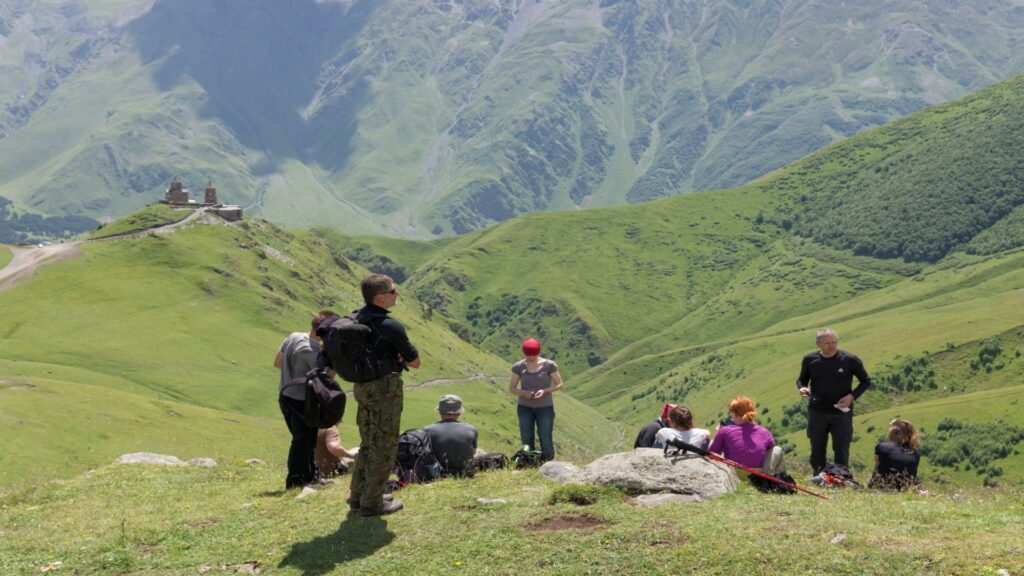
Proper preparation before venturing into wolf country significantly reduces the likelihood of problematic encounters. Research the specific area you plan to visit, as wolf behavior and management protocols may vary by region. Pack bear spray, which is also effective against wolves if necessary. Consider bringing noisemakers such as whistles or bells that can alert wildlife to your presence. Avoid bringing strong-smelling foods or perfumed products that might attract curious wolves investigating unusual scents.
If you’re traveling with pets, check local regulations, as some areas prohibit dogs or require them to be leashed to prevent wolf interactions. Informing someone about your itinerary and expected return time ensures someone will alert authorities if you don’t return as scheduled, which is good practice for any wilderness excursion regardless of wildlife concerns.
Proper Food Storage While Camping

Proper food management is crucial to preventing wolf encounters around your campsite. Always store food, cooking equipment, and toiletries in airtight containers, preferably in designated food lockers or hung from trees at least 10-15 feet high and 4 feet away from the trunk. Clean all cooking areas thoroughly after meal preparation and dispose of dishwater at least 200 feet from your sleeping area.
Never feed wolves or other wildlife, either intentionally or through careless food handling, as this dangerously conditions them to associate humans with food. Even seemingly innocuous acts like leaving food scraps or not properly disposing of fish entrails after fishing can attract wolves to your location. Remember that a food-conditioned wolf quickly becomes a dangerous wolf, and such animals often end up being euthanized by wildlife management officials.
Campsite Selection and Setup
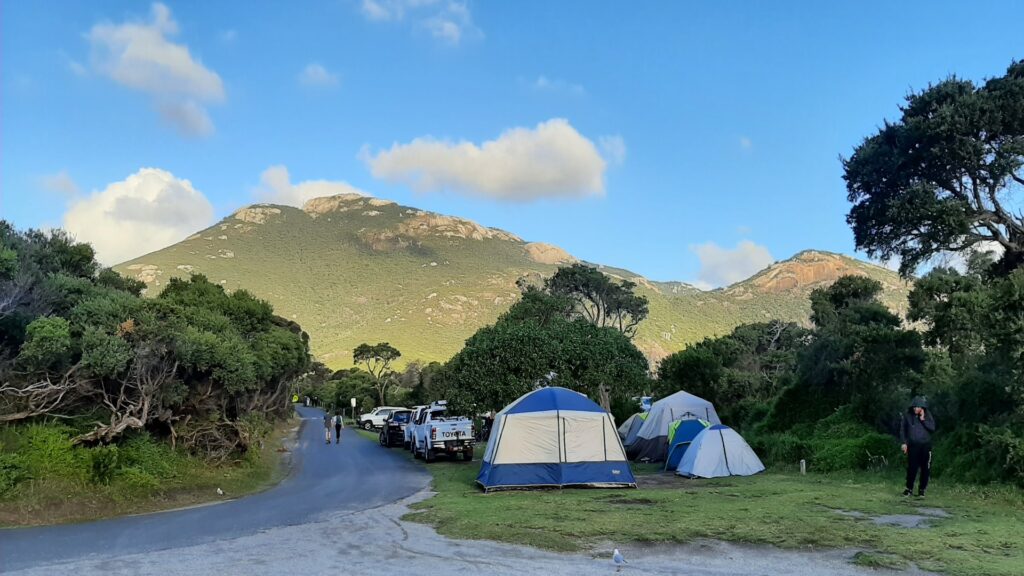
Choosing an appropriate campsite can significantly reduce your chances of nighttime wolf encounters. Avoid camping near game trails, livestock areas, or recent kill sites where predators may be active. Select open areas where you can maintain good visibility of your surroundings rather than densely wooded locations. If possible, position your tent away from the perimeter of your campsite, ideally between natural barriers like rock formations.
Maintain a clean campsite by promptly disposing of all garbage in designated containers or packing it out. Some experienced backcountry campers create a triangle configuration with separate areas for sleeping, food storage, and cooking to minimize attractants near where they sleep. In group camping situations, arrange tents in a circle or close proximity to create a more substantial human presence.
What to Do During a Distant Wolf Sighting
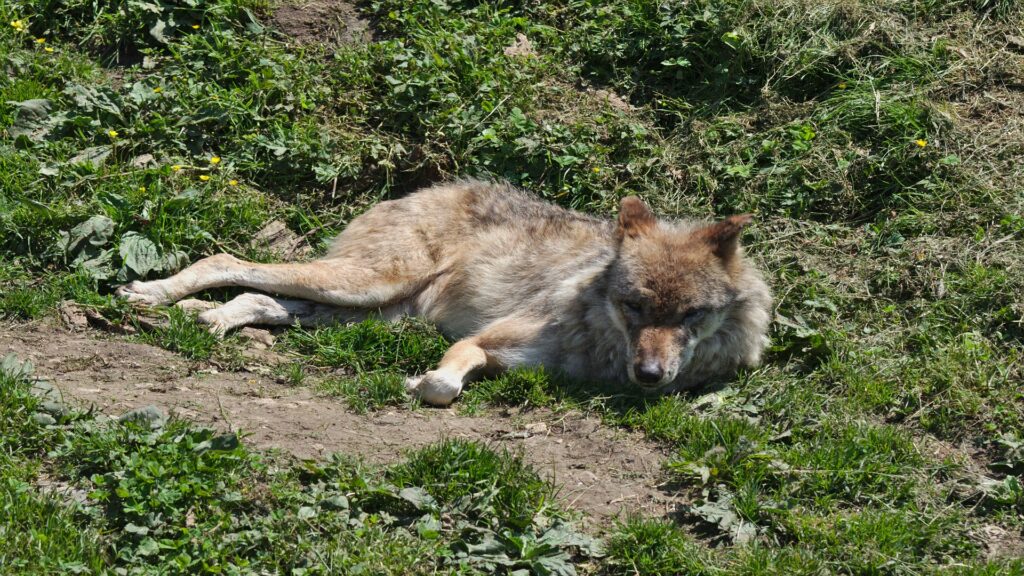
If you spot a wolf at a distance, consider yourself fortunate to witness such a magnificent animal in its natural habitat. Remain calm and enjoy the experience while maintaining a respectful distance of at least 100 yards. Never approach the wolf for a closer look or better photograph, as this can stress the animal and potentially alter its natural behavior patterns.
If hiking, quietly change your direction to avoid moving closer to the wolf’s location. Discreetly observe the wolf’s behavior—if it hasn’t noticed you and is moving away, simply continue your hike in another direction. Document the sighting with photos only if possible without disturbing the animal, as such records can provide valuable information to wildlife biologists studying wolf populations and movements in the area.
Responding to a Close Wolf Encounter
If you find yourself in close proximity to a wolf, your immediate response should be to create space between you and the animal. Stop walking, remain calm, and resist the urge to run, as running may trigger a predatory chase response. Make yourself appear larger by raising your arms and standing tall while backing away slowly without turning your back on the animal. Speak in a firm, loud voice to assert your human presence, which wolves typically avoid. If hiking with trekking poles, hold them above your head to increase your apparent size.
Watch the wolf’s body language—ears forward with direct eye contact generally indicate curiosity rather than aggression, while laid-back ears, bared teeth, or a crouched position may signal more concerning intentions. Remember that most wolves will choose to retreat once they’ve recognized you as human.
Recognizing Warning Signs of Aggression
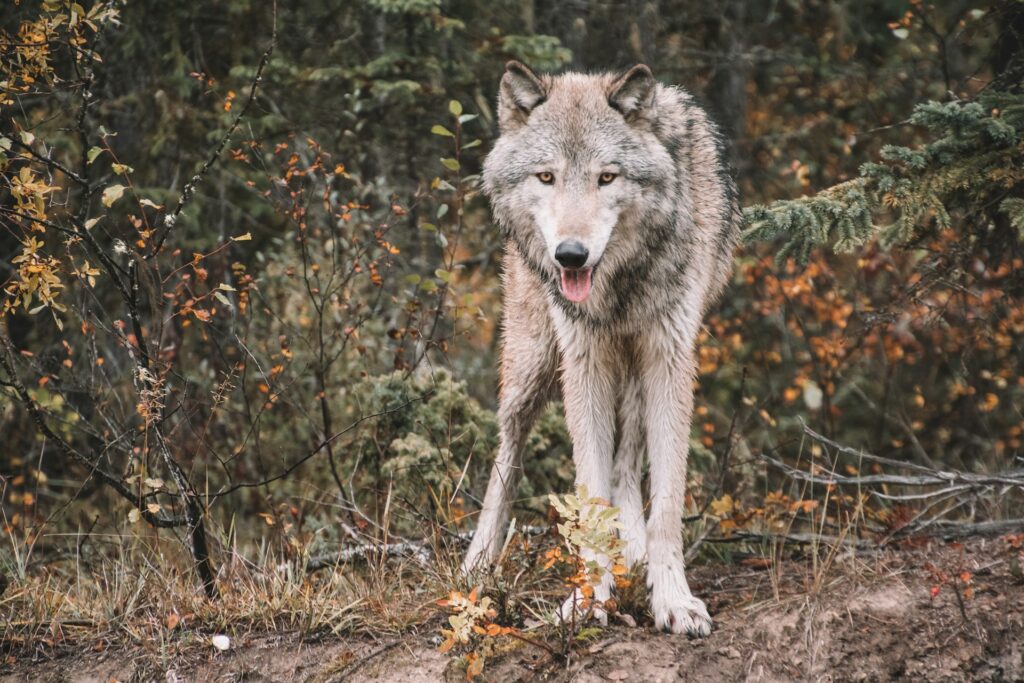
While wolf aggression toward humans is rare, it’s vital to recognize potential warning signs that a wolf may be habituated to humans or displaying unusual behavior. Wolves that approach rather than retreat from humans, especially if they show little fear or continue advancing after being noticed, may be concerning. Watch for stalking behavior, where the wolf circles or follows persistently rather than moving away. Defensive postures, including raised hackles, growling, snarling, or bared teeth, indicate potential aggression.
Be particularly cautious around wolves that appear skinny or unhealthy, as desperate or rabid animals may behave unpredictably. Wolves displaying these concerning behaviors should be reported to park rangers or wildlife authorities immediately after you’ve safely left the area, as they may require management intervention to prevent future dangerous encounters.
Using Deterrents Effectively
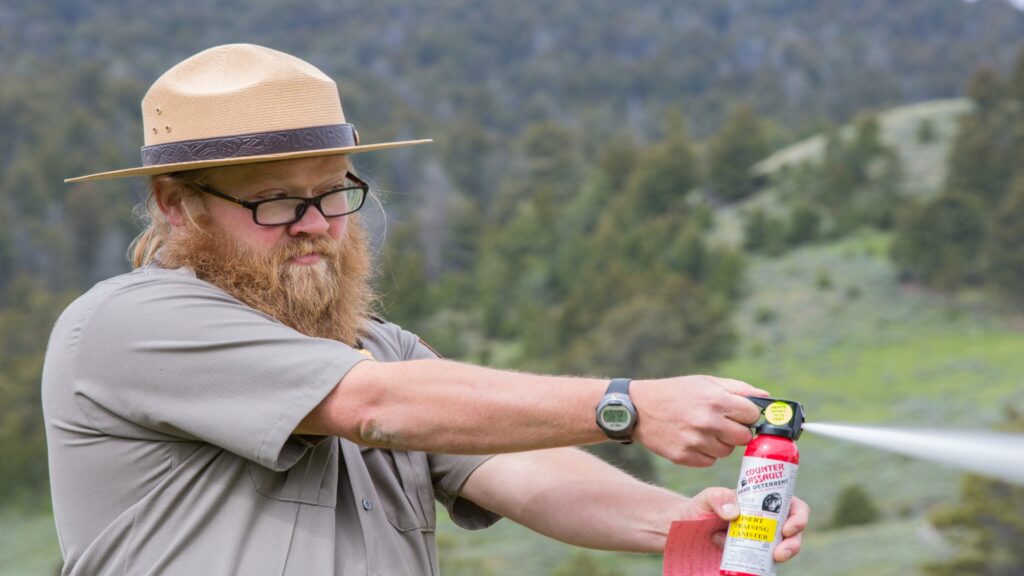
If a wolf continues to approach despite your efforts to appear large and intimidating, be prepared to employ active deterrents. Bear spray has proven highly effective against wolves when used correctly—remove the safety tab, wait until the wolf is within 30-40 feet, and spray in short bursts, aiming slightly downward to create a cloud between you and the animal. Loud noises can also deter approaching wolves—shout forcefully, clap hands, bang pots together, or use air horns if available. Throwing objects near (but not directly at) the wolf may startle it into retreating.
If hiking with trekking poles, bang them together or against rocks to create startling noises. Carry small rocks in accessible pockets that can be thrown to create distracting sounds if needed. These deterrents work best before a wolf has committed to an aggressive approach, emphasizing the importance of early intervention.
Protecting Children and Pets
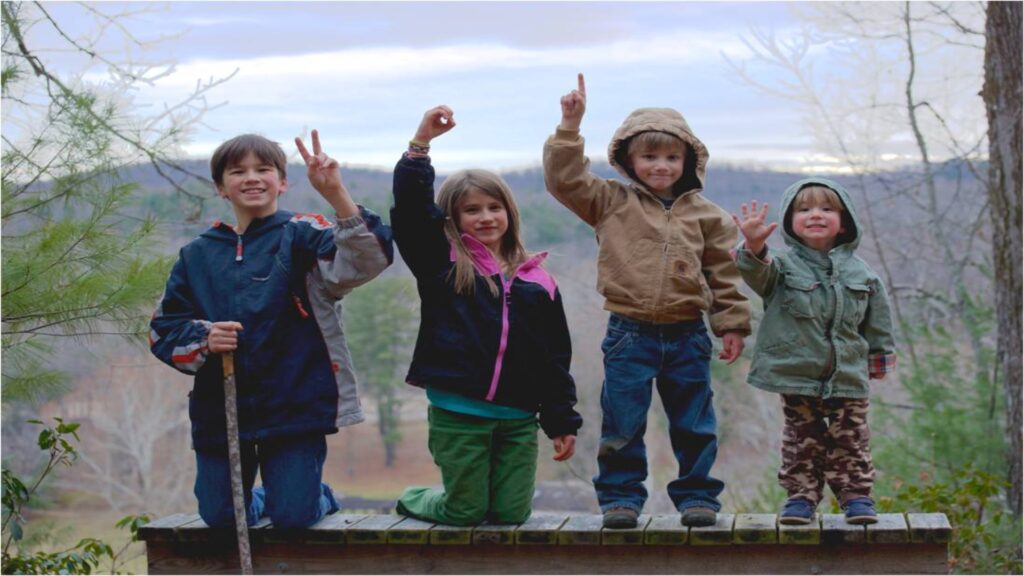
Children and pets require special consideration in wolf country due to their smaller size and potentially prey-like movements. Always keep children within arm’s reach in areas with known wolf activity, and immediately pick up small children if wolves are spotted. Teach older children not to run or make high-pitched noises if they see a wolf. Pets, particularly dogs, present complex challenges in wolf territory—wolves may perceive them as either territorial rivals or potential prey. Keep dogs leashed at all times, and consider using a short, non-retractable leash to maintain close control.
If a wolf approaches while you have a dog, position yourself between your pet and the wolf while keeping your dog close behind you. In some high-risk areas, protective dog vests with rigid collars and spikes may provide additional protection against predator attacks.
What to Do in the Extremely Rare Case of an Attack
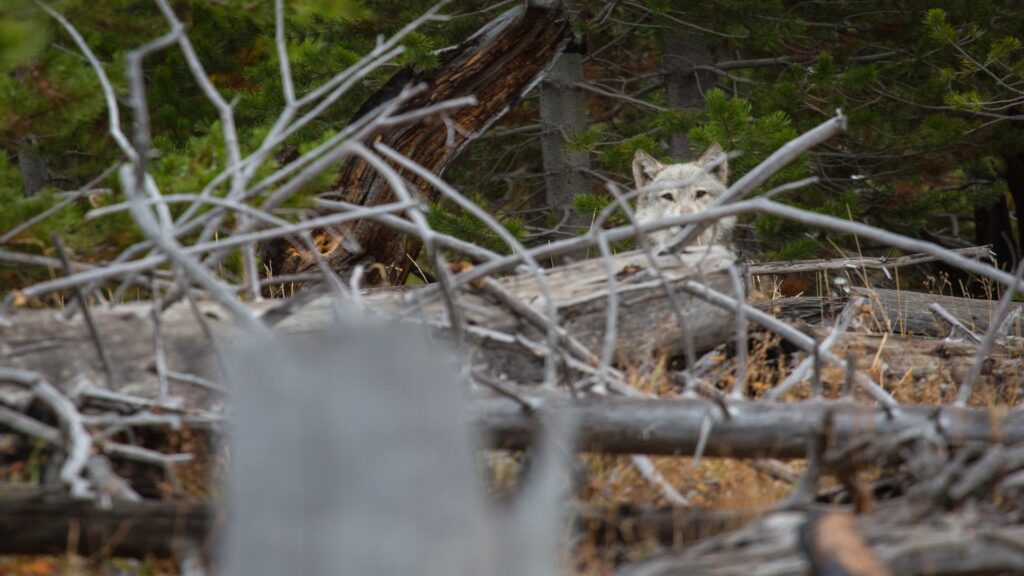
In the extraordinarily unlikely event that a wolf attacks (physical contact), you must respond aggressively to defend yourself. Fight back using any available means, focusing strikes on sensitive areas like the eyes, nose, and throat. Use hiking poles, knives, rocks, sticks, or any improvised weapons to strike forcefully. Unlike with some predators, playing dead is not recommended during a wolf attack. Continue fighting and making loud noises until the wolf retreats.
If you’re carrying bear spray and haven’t yet deployed it, use it directly at the animal’s face at close range. After surviving any physical encounter with a wolf, seek immediate medical attention even for seemingly minor wounds, as wild animal bites can cause serious infections. Report the incident to authorities as soon as possible, providing precise location details and a description of the wolf’s behavior, as such attacks typically indicate an abnormal animal that may pose further public safety risks.
Reporting Wolf Sightings Appropriately
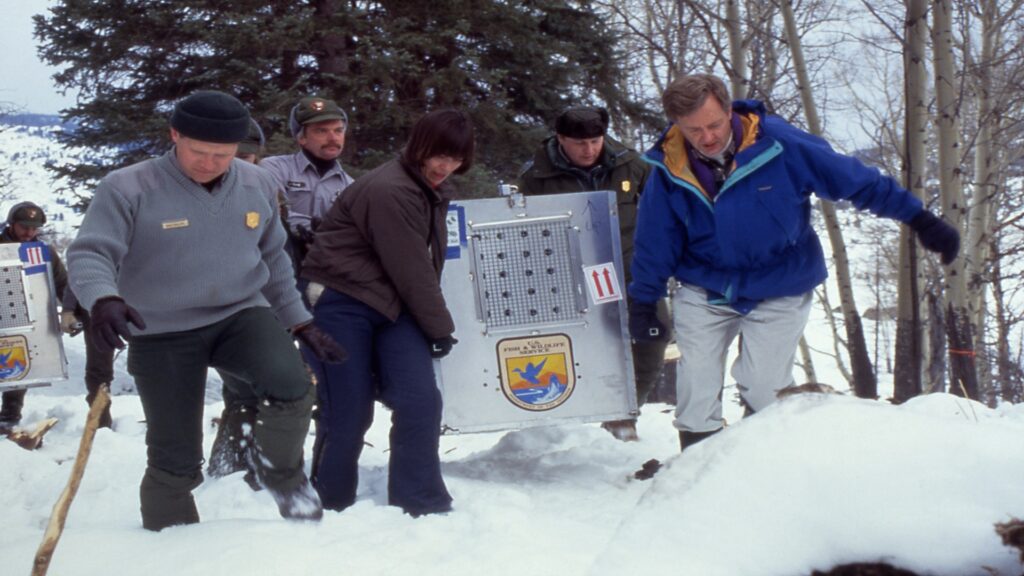
Reporting wolf sightings, especially unusual behavior, provides valuable data to wildlife managers monitoring wolf populations and behavior patterns. Contact the nearest ranger station, visitor center, or wildlife management office to report your experience. Provide specific details, including location (GPS coordinates if available), time of day, the wolf’s appearance, and a detailed description of its behavior. Mention whether the wolf seemed fearful, curious, or habituated to human presence. Share any photos or videos you may have captured, as visual evidence helps biologists identify individual wolves and packs.
While reporting is important, avoid broadcasting the exact location of wolf sightings on social media, as this can lead to harassment of the animals by wildlife photographers or thrill-seekers wanting their own close encounters. Official channels ensure the information reaches those who can use it responsibly for conservation and management purposes.
The Ethics of Wolf Conservation and Coexistence
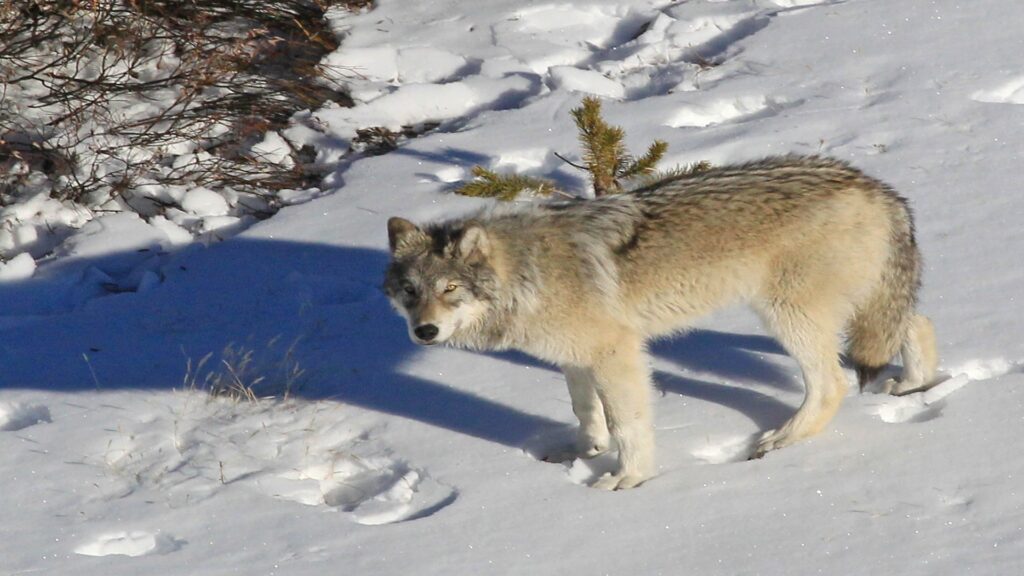
Understanding the ecological importance of wolves helps foster responsible attitudes toward these often misunderstood predators. Wolves play a crucial role in maintaining healthy ecosystems by controlling prey populations and influencing their behavior, which can lead to remarkable trophic cascades—as demonstrated in Yellowstone National Park, where wolf reintroduction helped restore riparian habitats and increased biodiversity.
Human-wolf coexistence requires balancing wildlife conservation with human safety concerns through education, proper wilderness behavior, and sustainable management practices. Personal encounters, even frightening ones, should be viewed within this broader context of sharing landscapes with native wildlife. By preparing properly and responding appropriately to wolf encounters, outdoor enthusiasts contribute to successful coexistence that allows both humans and wolves to thrive in their respective roles within the natural environment.
Conclusion
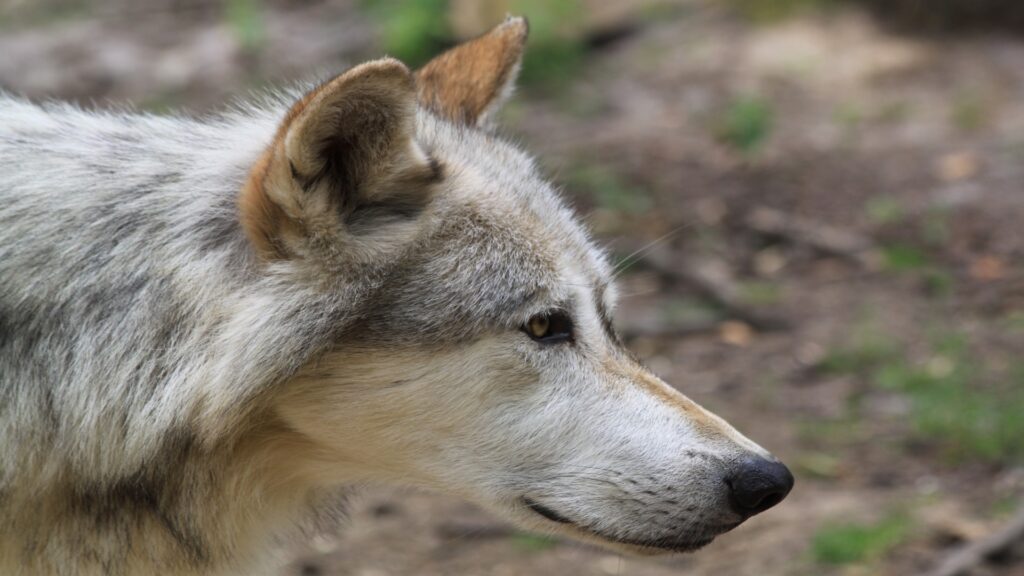
Encountering a wolf in the wild represents an increasingly possible scenario as wolf populations recover and outdoor recreation grows in popularity. By understanding wolf behavior, taking preventive measures, and knowing how to respond appropriately if an encounter occurs, hikers and campers can significantly reduce risks while appreciating these iconic predators from a safe distance. Remember that wolves typically avoid humans whenever possible, and by respecting their space and natural behaviors, we contribute to successful coexistence.
With proper preparation and response protocols, a wolf sighting can remain what it should be—a remarkable wilderness experience rather than a dangerous confrontation. As we venture into their territory, our responsibility extends beyond personal safety to ensuring these ecologically vital animals retain their natural wariness of humans, ultimately protecting both species.

